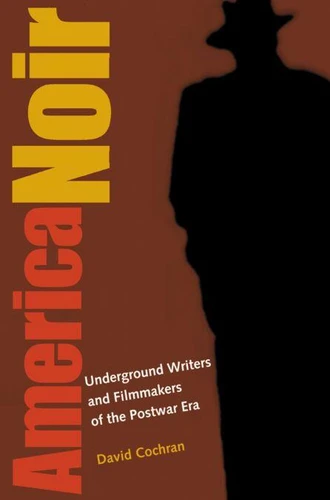America Noir. Underground Writers and Filmmakers of the Postwar Era
Par :Formats :
Disponible dans votre compte client Decitre ou Furet du Nord dès validation de votre commande. Le format ePub protégé est :
- Compatible avec une lecture sur My Vivlio (smartphone, tablette, ordinateur)
- Compatible avec une lecture sur liseuses Vivlio
- Pour les liseuses autres que Vivlio, vous devez utiliser le logiciel Adobe Digital Edition. Non compatible avec la lecture sur les liseuses Kindle, Remarkable et Sony
- Non compatible avec un achat hors France métropolitaine
 , qui est-ce ?
, qui est-ce ?Notre partenaire de plateforme de lecture numérique où vous retrouverez l'ensemble de vos ebooks gratuitement
Pour en savoir plus sur nos ebooks, consultez notre aide en ligne ici
- Nombre de pages280
- FormatePub
- ISBN978-1-58834-550-9
- EAN9781588345509
- Date de parution21/06/2016
- Protection num.Adobe DRM
- Taille2 Mo
- Infos supplémentairesepub
- ÉditeurSmithsonian Books
Résumé
In America Noir David Cochran details how ten writers and filmmakers challenged the social pieties prevalent during the Cold War, such as the superiority of the American democracy, the benevolence of free enterprise, and the sanctity of the suburban family. Rod Serling's The Twilight Zone featured victims of vast, faceless, bureaucratic powers. Jim Thompson's noir thrillers, such as The Grifters, portrayed the ravages of capitalism on those at the bottom of the social ladder.
Patricia Highsmith, in The Talented Mr. Ripley, placed an amoral con man in an international setting, implicitly questioning America's fitness as leader of the free world. Charles Willeford's pulp novels, such as Wild Wives and Woman Chaser, depicted the family as a hotbed of violence and chaos. These artists pioneered a detached, ironic sensibility that radically juxtaposed cultural references and blurred the distinctions between "high" and "low" art.
Their refusal to surrender to the pressures for political conformity and their unflinching portrayal of the underside of American life paved the way for the emergence of a 1960s counterculture that forever changed the way America views itself.
Patricia Highsmith, in The Talented Mr. Ripley, placed an amoral con man in an international setting, implicitly questioning America's fitness as leader of the free world. Charles Willeford's pulp novels, such as Wild Wives and Woman Chaser, depicted the family as a hotbed of violence and chaos. These artists pioneered a detached, ironic sensibility that radically juxtaposed cultural references and blurred the distinctions between "high" and "low" art.
Their refusal to surrender to the pressures for political conformity and their unflinching portrayal of the underside of American life paved the way for the emergence of a 1960s counterculture that forever changed the way America views itself.
In America Noir David Cochran details how ten writers and filmmakers challenged the social pieties prevalent during the Cold War, such as the superiority of the American democracy, the benevolence of free enterprise, and the sanctity of the suburban family. Rod Serling's The Twilight Zone featured victims of vast, faceless, bureaucratic powers. Jim Thompson's noir thrillers, such as The Grifters, portrayed the ravages of capitalism on those at the bottom of the social ladder.
Patricia Highsmith, in The Talented Mr. Ripley, placed an amoral con man in an international setting, implicitly questioning America's fitness as leader of the free world. Charles Willeford's pulp novels, such as Wild Wives and Woman Chaser, depicted the family as a hotbed of violence and chaos. These artists pioneered a detached, ironic sensibility that radically juxtaposed cultural references and blurred the distinctions between "high" and "low" art.
Their refusal to surrender to the pressures for political conformity and their unflinching portrayal of the underside of American life paved the way for the emergence of a 1960s counterculture that forever changed the way America views itself.
Patricia Highsmith, in The Talented Mr. Ripley, placed an amoral con man in an international setting, implicitly questioning America's fitness as leader of the free world. Charles Willeford's pulp novels, such as Wild Wives and Woman Chaser, depicted the family as a hotbed of violence and chaos. These artists pioneered a detached, ironic sensibility that radically juxtaposed cultural references and blurred the distinctions between "high" and "low" art.
Their refusal to surrender to the pressures for political conformity and their unflinching portrayal of the underside of American life paved the way for the emergence of a 1960s counterculture that forever changed the way America views itself.



